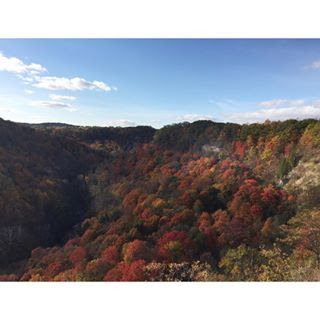Like many children growing up in suburbia, there were few places for me to explore in my neighbourhood that were considered ‘wild’. Nature didn’t play a large role in childhood; most of my experiences consisted of playing schoolyard games on the hot pavement or sprawling across freshly manicured lawns. But when I was a teenager, my family planted a garden in our backyard, equipped with a birdbath so we could watch birds from the kitchen windows. Although the garden was modest, only consisting of a few hosta plants dispersed under a young maple tree, I was proud I was able to bring nature into my own home. As I tended to the garden that summer, I felt a connection and responsibility to the environment that I had never experienced before. It was then that I decided to pursue an education and career in conservation.

Dundas Peak: One of my favourite green spaces in Hamilton
As I completed my degree in Environmental Studies in Hamilton, my interest in conservation issues continued to grow. Outside of school, I spent my free time volunteering with environmental groups, where I learned the profound role communities can have on nature when they act as stewards for their local environments. It was here that I saw first-hand the amazing work that can be accomplished when people and nature come together.

Volunteering with the Royal Botanical Gardens to restore wetlands
Last year, I decided to pursue my education further and enrolled in a Master of Forest Conservation (MFC) program here in Toronto. When I told my friends and family about this decision, many of their reactions were the same: What can someone possibly learn about forests from a school in such a dense, urban city? I’ll admit, even I was uncertain about the depth of forestry knowledge I could obtain from an institution enveloped by concrete. The program, however, has quashed many of my misconceptions about Toronto’s urban forest. I realize now that the urban forest plays an important role in the social, economic, and ecological aspects of every one of Toronto’s communities.

Feeding Mona monkeys in Ghana as part of the MFC program
I was first introduced to LEAF during my Forest Conservation degree and was thrilled to discover an organization so dedicated to protecting and enhancing Toronto’s urban forest. I was excited to see the variety of programs LEAF has established to engage communities with their urban landscapes. The enthusiasm exhibited for the urban forest by staff and volunteers alike is truly inspiring, and I’m looking forward to working with LEAF this summer as a Volunteer & Stewardship Assistant!
Photos taken by Kimberly Dowell.
The Urban Forest Champions blog series highlights some of our volunteers and program participants who play a crucial role in helping us improve the urban forest. Check out our other Urban Forest Champions on our blog or sign up for our free e-newsletter to read them first.
Kim is LEAF’s new Volunteer & Stewardship Assistant
